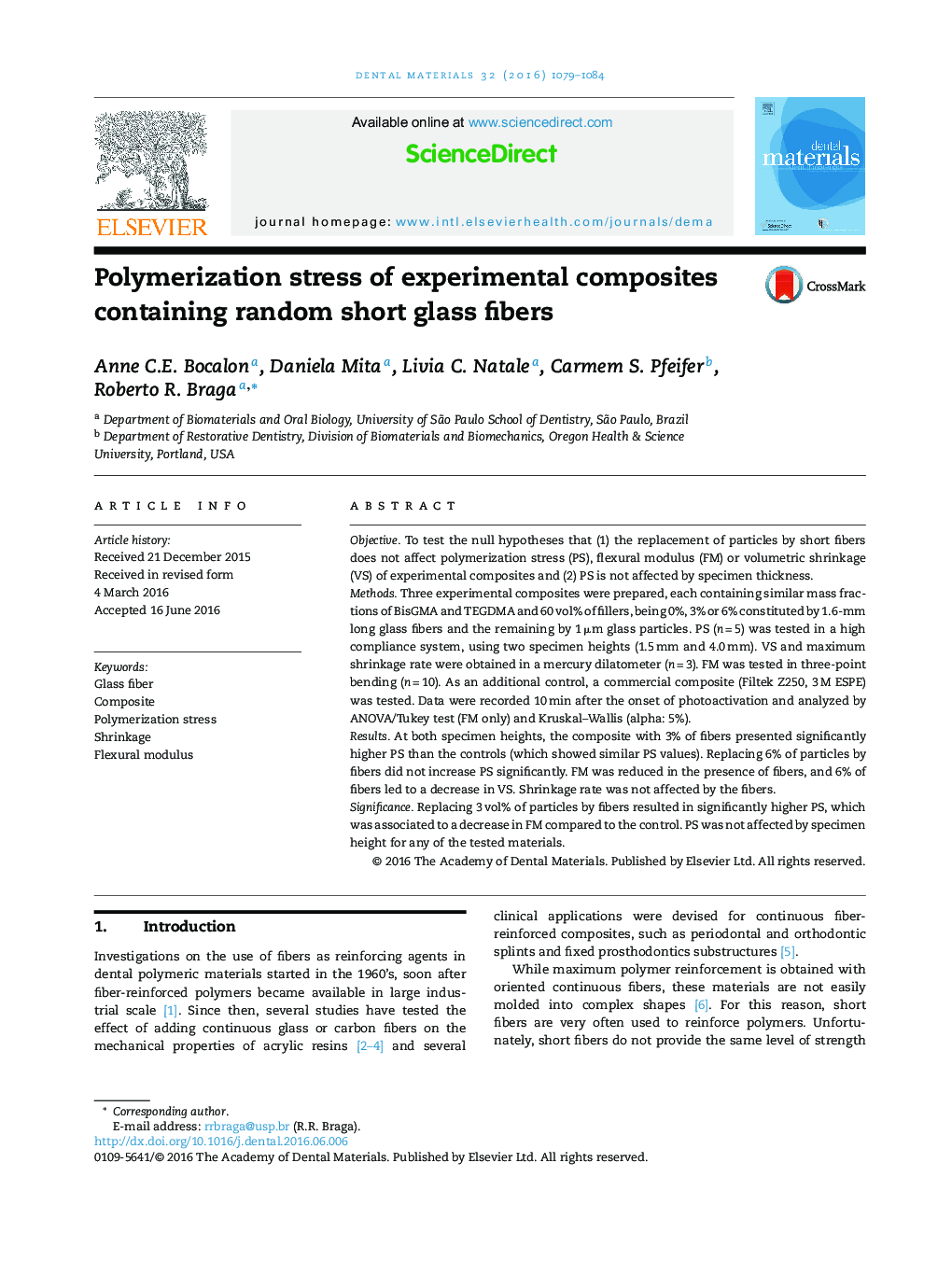| Article ID | Journal | Published Year | Pages | File Type |
|---|---|---|---|---|
| 1420359 | Dental Materials | 2016 | 6 Pages |
•Polymerization stress increased when 3% of particles were replaced by short fibers.•Polymerization stress was not affected by replacing 6% of particles with fibers.•Fiber orientation imposed by specimen height did not affect polymerization stress.•Flexural modulus was reduced by the replacement of particles with 3% and 6% fibers.•Volumetric shrinkage was reduced only in the composite with 6% of fibers.
ObjectiveTo test the null hypotheses that (1) the replacement of particles by short fibers does not affect polymerization stress (PS), flexural modulus (FM) or volumetric shrinkage (VS) of experimental composites and (2) PS is not affected by specimen thickness.MethodsThree experimental composites were prepared, each containing similar mass fractions of BisGMA and TEGDMA and 60 vol% of fillers, being 0%, 3% or 6% constituted by 1.6-mm long glass fibers and the remaining by 1 μm glass particles. PS (n = 5) was tested in a high compliance system, using two specimen heights (1.5 mm and 4.0 mm). VS and maximum shrinkage rate were obtained in a mercury dilatometer (n = 3). FM was tested in three-point bending (n = 10). As an additional control, a commercial composite (Filtek Z250, 3 M ESPE) was tested. Data were recorded 10 min after the onset of photoactivation and analyzed by ANOVA/Tukey test (FM only) and Kruskal–Wallis (alpha: 5%).ResultsAt both specimen heights, the composite with 3% of fibers presented significantly higher PS than the controls (which showed similar PS values). Replacing 6% of particles by fibers did not increase PS significantly. FM was reduced in the presence of fibers, and 6% of fibers led to a decrease in VS. Shrinkage rate was not affected by the fibers.SignificanceReplacing 3 vol% of particles by fibers resulted in significantly higher PS, which was associated to a decrease in FM compared to the control. PS was not affected by specimen height for any of the tested materials.
